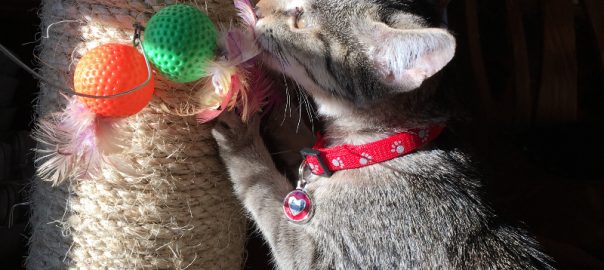A reader has the DIY bug and a cat. Here are some tips for building a great scratching post!
Q: I want to build a scratching post for my cat. Do you have any tips?
A: That’s a great idea. Building it yourself ensures that it suits your cat’s scratching style and size. Here’s what to think about.
For cats, a good stretch is an essential part of a great scratching experience. They should be able to extend their bodies full length when they scratch. A 1-foot post offers enough scratching room for a kitten, but an adult cat will prefer a post that’s at least 3 feet high.
Cats may not understand why it’s OK to scratch a post covered in carpet but not OK to scratch the carpet on the floor. Help them out by covering the post in a different material, such as rope or sisal.
Materials you’ll need to build a basic post are a 16-by-16-by-1/2-inch piece of plywood for the base; a post that’s at least 36 inches high and 3 to 4 inches in diameter; 100 to 150 feet of 3/8-inch sisal or rope; one small box of 1/2- to 3/4-inch-long U-shaped brads; two 1 1/2-inch wood screws; and a drill, drill bits and hammer.
Using a U-brad, attach one end of the rope as close to the post’s upper edge as possible. Wrap the rope tightly, attaching a U-brad at every quarter turn during the first wrap. Continue wrapping, pushing rows close together to avoid gaps and loose rope. Add a U-brad occasionally to keep the rope from slipping. On the final wind, tack the rope onto the post using two or three U-brads. Hammer U-brads into the post so your cat can’t pull them out. Using the drill and wood screws, attach the post firmly to the plywood base, making sure the post is centered.
There’s more in Pet Connection, the weekly nationally syndicated pet feature I co-write with Kim Campbell Thornton and my daughter, trainer Mikkel Becker.




